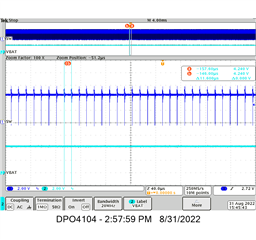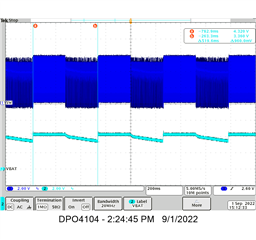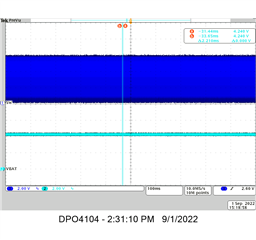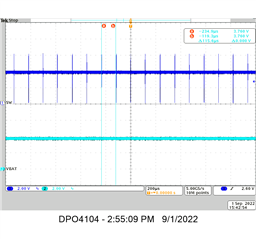Hi,
My customer has encountered a problem with bq25601. When the VBAT pin is under light load or no load, the buck charger should enter the PFM mode. However, the actual test waveform shows that bq25610 does not seem to enter the PFM mode under no load. Would you please confirm that this is normal? Can you explain the reason for this waveform?
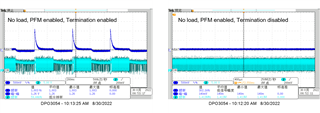
In OTG mode, When no-load, boost enters PFM mode. what made the different between buck mode and boost mode?
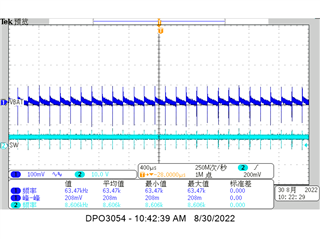
Thanks!


